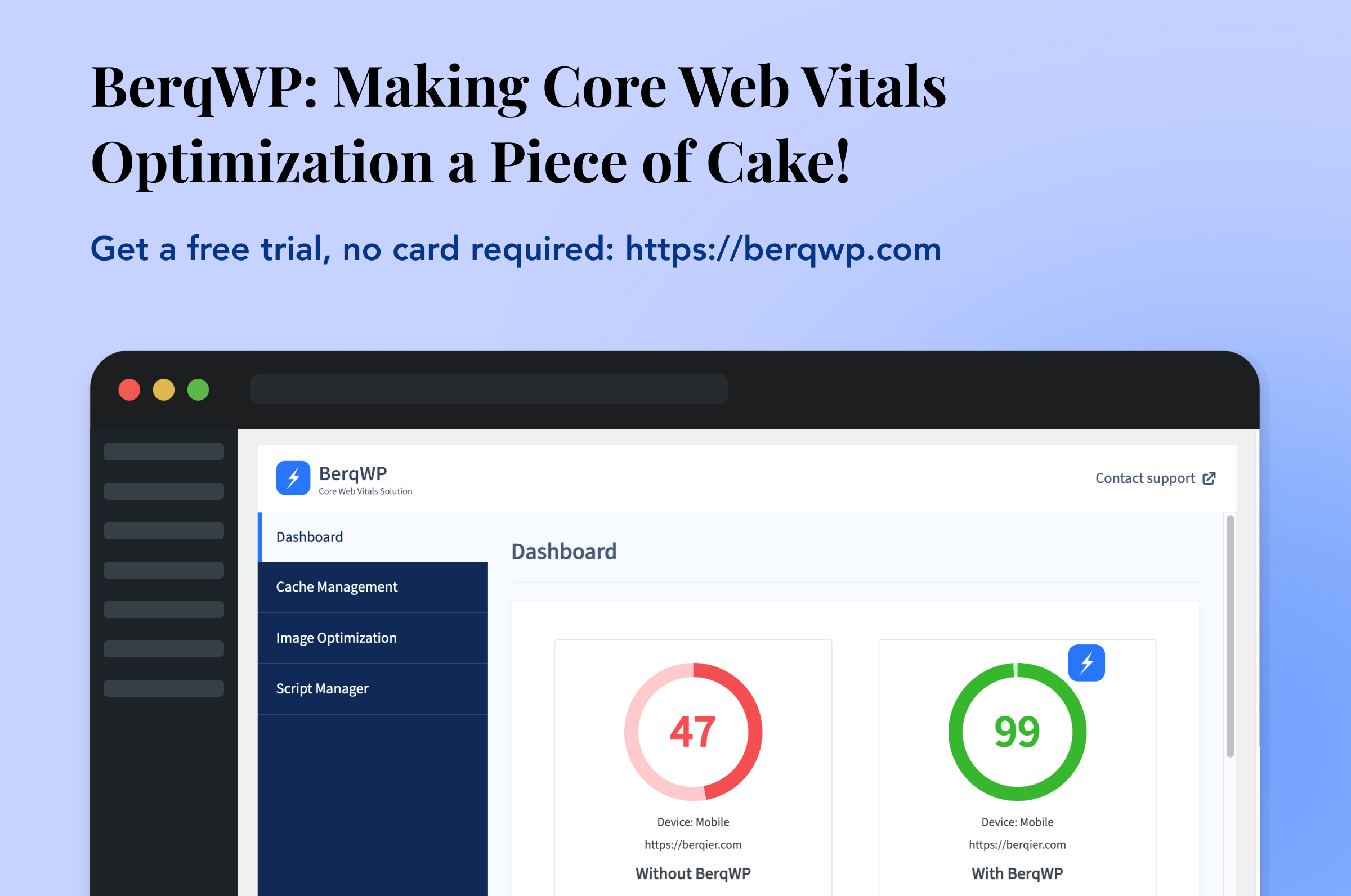In the dynamic world of web development, WordPress remains a leading platform. However, like all platforms, site performance can sometimes lag. Enter BerqWP, the ultimate solution to supercharge your WordPress website’s performance in 2023.
1. Seamless Integration with WordPress
BerqWP isn’t just another plugin. Designed with the modern WordPress developer in mind, it integrates seamlessly with your existing setup, ensuring an easy implementation process.
2. Addressing Core Web Vitals
With the increasing importance of Core Web Vitals, BerqWP has tailored features that directly enhance these crucial metrics. From LCP fixes to optimizing JavaScript, BerqWP ensures your WordPress site stays in the green zone.
3. Advanced Caching Capabilities
The cache warmup feature of BerqWP stands out as a revolutionary approach to caching. It pre-emptively builds a cache, ensuring that users always experience lightning-fast load times.
4. Modern Image Handling
The WebP image format has become a standard for modern websites. BerqWP doesn’t just support it but optimizes it, ensuring that your visuals are both stunning and fast-loading.
5. Lazy Loading Perfected
From images to YouTube videos, BerqWP’s lazy loading feature ensures content is served without any lags, enhancing user engagement and reducing bounce rates.
6. CSS and JavaScript Optimization
Bulky CSS and JavaScript files can hinder site performance. BerqWP streamlines and optimizes them, ensuring smooth site operations and faster load times.
7. Continuous Updates and Support
The digital landscape is ever-evolving. BerqWP’s dedicated team ensures regular updates, keeping your site ahead of the curve. Plus, with responsive support, you’re never alone in your performance optimization journey.
Conclusion
In 2023, website performance is not just a luxury; it’s a necessity. BerqWP emerges as the go-to solution for WordPress developers, offering a suite of features that not only address today’s challenges but also prepare sites for the future. If peak WordPress performance is your goal, BerqWP is the ultimate solution you’ve been seeking.





